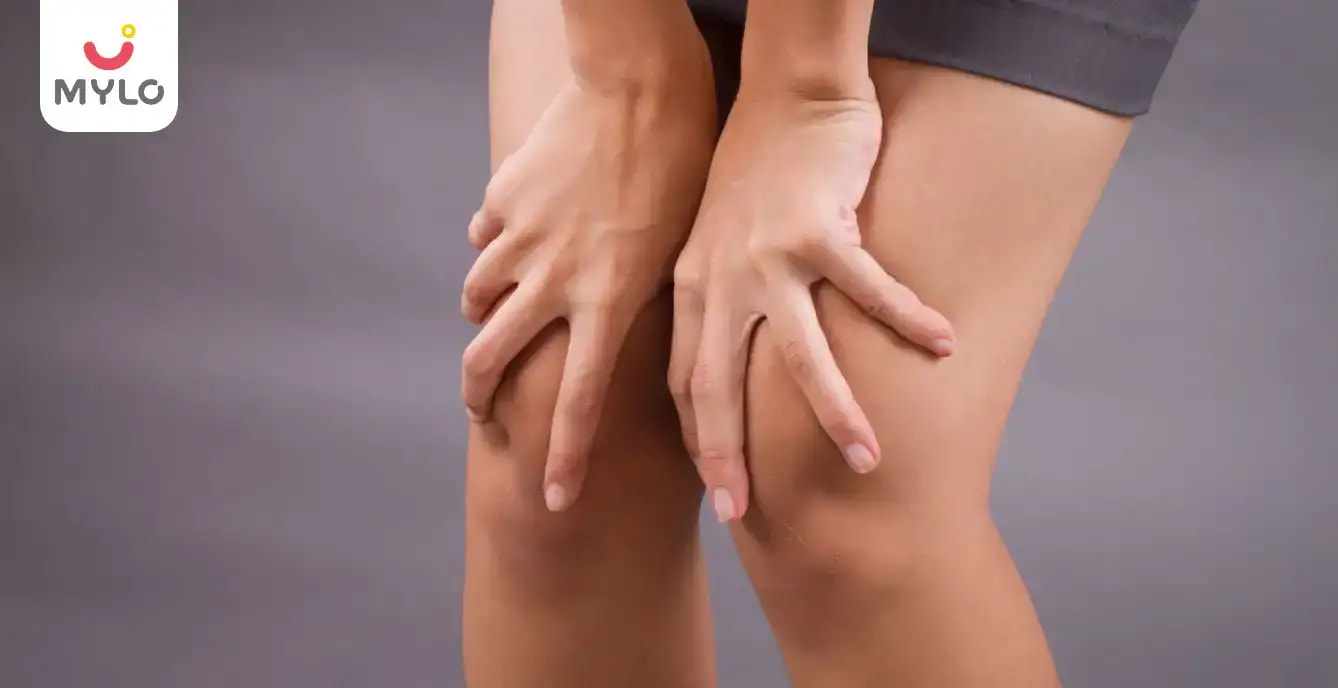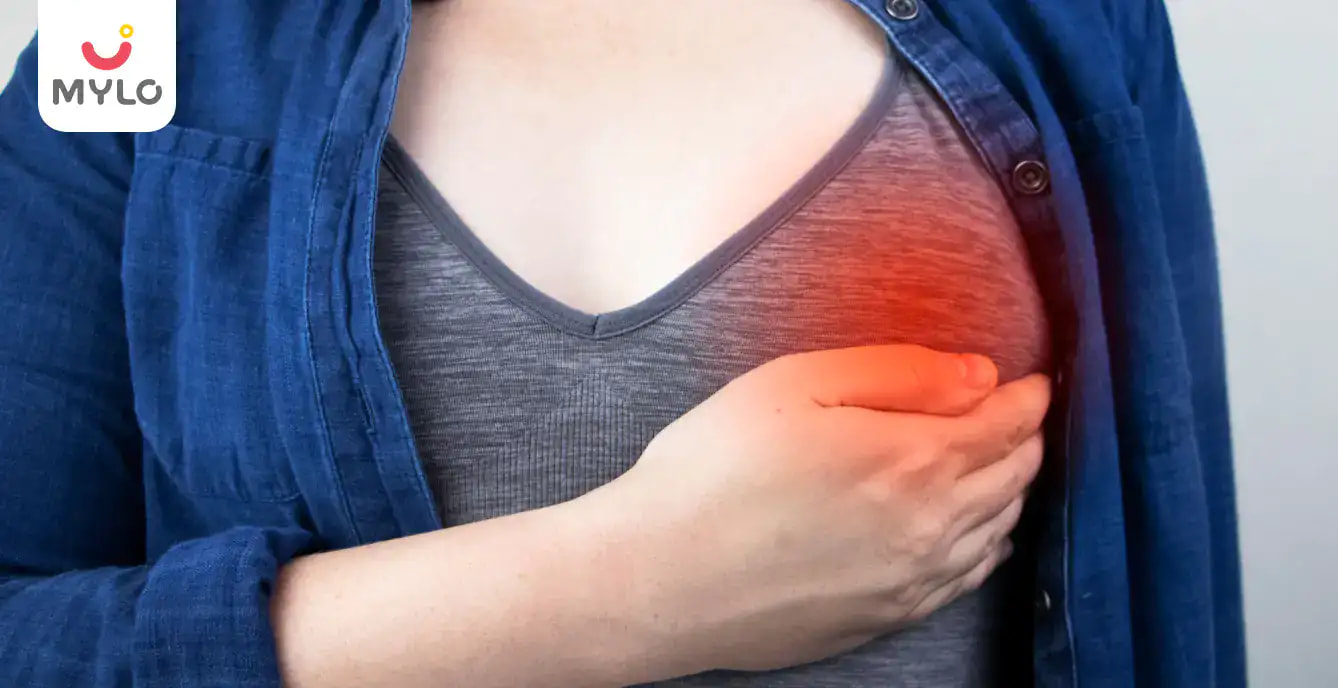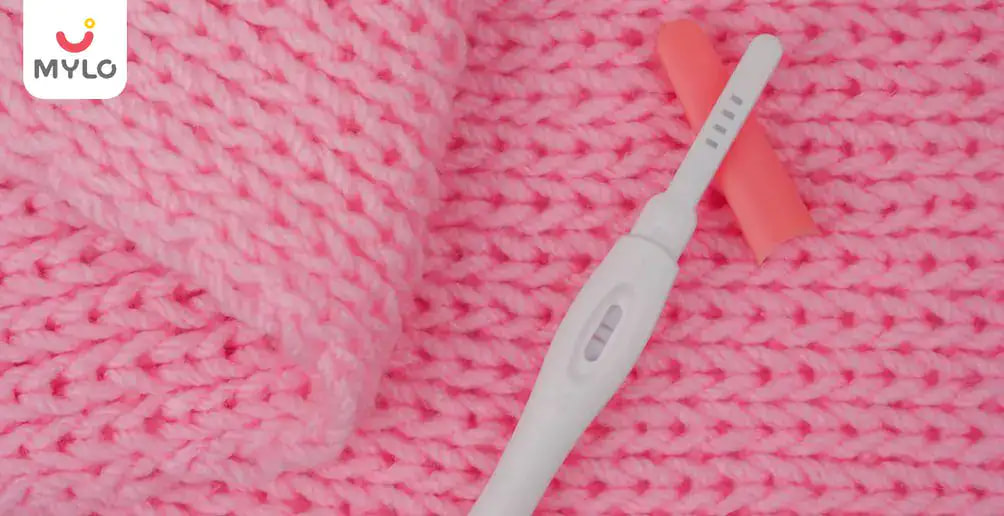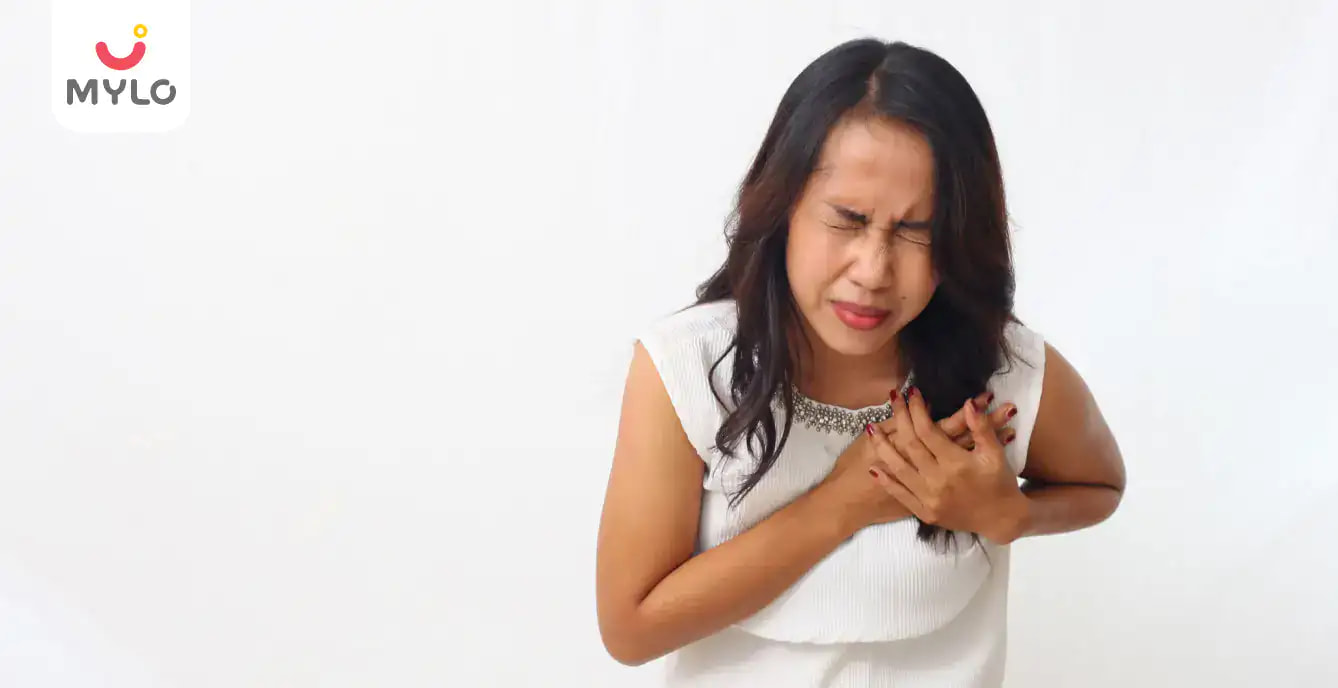Home

Women Specific Issues

Osteoporosis: Causes, Symptoms, Risks & Treatment
In this Article

Women Specific Issues
Osteoporosis: Causes, Symptoms, Risks & Treatment
Updated on 3 November 2023
In recent years, osteoporosis has become a prevalent condition among women. It can cause the bones to become weak and brittle, making them more prone to fractures. In this article, we will discuss osteoporosis meaning, its symptoms, causes and treatment.
What is osteoporosis?
Firstly, let us understand what is osteoporosis. Osteoporosis is a condition that makes the bones brittle and more prone to fractures. This condition can be seen more frequently in women than in men. Osteoporosis in females is more common due to the pre-existence of smaller and thinner bones compared to those of men.
There are two kinds of osteoporosis:
1. Primary Osteoporosis
This type of osteoporosis is a part of the natural ageing process
2. Secondary Osteoporosis
This is a co-morbid condition to other diseases.
You may also like to read : Top 10 Health Issues Related To Women
Who gets osteoporosis?
Now that we know osteoporosis meaning, it's important to undertsand who can get it. There are numerous factors that can increase your likelihood of developing osteoporosis such as your age, race, lifestyle choices and existing medical conditions or treatments. Most of these factors are beyond your control.
1. Age
As you get older in life, your chances of developing osteoporosis go up.
2. Gender
Although osteoporosis affects both men and women, women are more likely to get osteoporosis than men.
3. Race
Your risk of osteoporosis disease is greater if you’re white or of Asian descent.
4. Family history
Having a parent or sibling with osteoporosis can put you at a greater risk of developing osteoporosis.
5. Body frame
Men and women with smaller body frames tend to be at a higher risk of osteoporosis because as they get older, their bone mass decreases.
Causes of osteoporosis
Osteoporosis does not stem exclusively from old age, your race or gender, but there could be several underlying factors behind this condition. The causes and risk factors involved in the development and progression of osteoporosis are listed below:
1. Menopause
Menopause and osteoporosis are directly dependent on each other. Estrogen, the hormone responsible for maintaining bone density, drops after menopause. This decrease in estrogen levels in a woman's body leads to osteoporosis.
You may also like to read : Perimenopause: Causes, Symptoms, Risks & Treatment
2. Premature Ovarian Failure
It happens before the age of 40. It is a condition wherein sufficient estrogen is not produced by the ovaries, and the eggs are not released periodically. Low estrogen levels result in the development of osteoporosis in women.
3. Low Body Mass Index (BMI)
A downsized calorie intake and harmful eating habits affect the production of numerous hormones responsible for bone health. Eating disorders such as anorexia nervosa and bulimia nervosa contribute to poor bone health.
4. Autoimmune Diseases
Rheumatoid arthritis, systemic lupus erythematosus, and multiple sclerosis are some autoimmune conditions. These badly affect one's bones and increase the risk of developing osteoporosis disease.
5. Insufficient Physical Activity
Inadequate physical exercise severely impacts an individual's buildup and maintenance of bone density. A sedentary lifestyle is among the significant causes of osteoporosis.
6. Calcium Deficiency
Calcium is known for building up strong bones. Calcium deficit diets lead to brittle bones and decreased resistance to fractures.
7. Cigarette Smoking and Alcoholism
Long-term, heavy drinking and chain smoking trigger the onset of osteoporosis.
8. Certain Medications
Medicines that treat arthritis, asthma, lupus, thyroid disease, stroke, breast cancer and prostate cancer affect hormone levels. They interfere with the release and distribution of hormones and sometimes result in osteoporosis.
Symptoms of osteoporosis
Osteoporosis often goes unnoticed until one gets a fractured bone because it does not have identifiable and overt symptoms. However, one should keep a lookout for some common osteoporosis symptoms and consult a specialist if necessary. The osteoporosis symptoms include:
-
Slanted Shoulders
-
A curve in the back
-
Loss in height (inches)
-
Backache
-
Hunched stance
-
Shortness of breath, in case of compressed spinal discs
Risks of osteoporosis
Osteoporosis can increase a person’s risk of bone fractures, especially in the hip or spine. A hip fracture can increase the risk of a disability or even death in the first year of injury. Spinal fractures, in some cases, can occur without any fall. Osteoporosis disease can cause the bones of the spine to weaken to the point of a collapse, resulting in back pain, loss of height and hunched forward posture.
Diagnosis of osteoporosis
Osteoporosis can be diagnosed using certain tests and diagnostic tools and machines. Laboratory analysis, x-rays, DEXA bone density scan, conventional radiography, CT scans, MRI, bone scan (scintigraphy) and biopsy are some of the commonly employed techniques to diagnose and map the progression of osteoporosis.
Treatment of osteoporosis
The management and treatment of osteoporosis in females depend on a variety of factors. These include co-morbidities, medical histories, personal preferences, etcetera. Following are some of the options for osteoporosis treatment:
1. Non-Pharmacological
This includes the elimination of smoking and alcohol. Furthermore, regular exercise of 30 minutes daily, three to four times per week, improves bone mineral density (BMD). Sufficient intake of calcium and vitamin D and eating a healthy diet also helps in the improvement and maintenance of bone health.
2. Pharmacological
Alendronate (Binosto, Fosamax), ibandronate (Boniva), raloxifene (Evista), risedronate (Actonel, Stevia), and zoledronic acid (Reclast, Zometa) are some of the commonly used pharmacological interventions for the treatment of osteoporosis.
3. Surgical
Surgical treatments carry some risks and may result in bone cement leak, constant discomfort, an allergy to the bone cement, an infection, paralysis, or pulmonary embolism. Kyphoplasty and Vertebroplasty are commonly performed surgical procedures for the treatment of osteoporosis.
How to prevent osteoporosis?
Maintaining optimum nutrition, exercising regularly and making healthy lifestyle choices may help prevent osteoporosis and keep your bones healthy throughout life.
Here are some things you can do to prevent osteoporosis:
1. Increase your calcium intake
People between the ages of 18 to 50 should consume at least 1,000 milligrams of calcium daily. Women over the age of 50 and men over 70 should increase the amount of daily consumption to 1,200 milligrams. You can also include calcium-rich foods such as dairy products, green leafy vegetables, soy products, canned salmon and calcium-fortified cereals.
If you find it hard to get enough calcium from your daily diet, you can consider taking calcium supplements. Be mindful of not consuming too much calcium as that may increase your risk for kidney stones or heart disease.
2. Don’t miss out on Vitamin D
Vitamin D is essential to help your body absorb calcium and improve your bone health. Most people should consume at least 600 IU (international units) of Vitamin D daily. This recommendation goes up after the age of 70. You can consume Vitamin D-rich foods such as cod liver oil, trout, salmon and milk and cereal fortified with Vitamin D. People with a lack of Vitamin D dietary sources and limited sun exposure may consider taking a supplement.
3. Exercise regularly
Exercising regularly can help build strong bones and slow down bone loss. Although it doesn’t matter when you start exercising, exercising regularly from a young age can maximise your benefits and minimise your risk of osteoporosis. You can combine strength training exercises with balance and weight-bearing exercises such as tai chi, walking, jogging, stair climbing, skipping etc.
Complications of osteoporosis
Among the most serious complications of osteoporosis are bone fractures, especially in the hip or spine. Hip fractures are mostly caused by a fall and may even result in a disability or increased risk of death in the first year of injury. Spinal fractures, in some cases, may even occur without any fall. The bones of the spine can sometimes weaken to the point of a collapse, resulting in back pain, loss of height and hunched forward posture.
If you have osteoporosis, what can you do?
Women and men with osteoporosis can live normal, fulfilling lives as long as they take the necessary precautions to maintain strong bones. This includes being aware of fall prevention techniques, taking your prescriptions consistently, and alerting your doctor to any changes in your health.
Researching more on osteoporosis meaning, symptoms, causes and treatment by networking, reading articles and books, using suitable products from the Mylo store and visiting healthcare facilities can help you make an informed decision and live a healthy life.
References
-
Mansoor U. Keen; Anil Kumar Reddy Reddivari. (2022).Osteoporosis In Females. NCBI
-
NHS. (2022). Causes-Osteoporosis.



Written by
Madhavi Gupta
Dr. Madhavi Gupta is an accomplished Ayurvedic doctor specializing in Medical content writing with an experience of over 10 years.
Read MoreGet baby's diet chart, and growth tips

Related Articles
Related Questions
Hello frnds..still no pain...doctor said head fix nhi hua hai..bt vagina me pain hai aur back pain bhi... anyone having same issues??

Kon kon c chije aisi hai jo pregnancy mei gas acidity jalan karti hain... Koi btayega plz bcz mujhe aksar khane ke baad hi samagh aata hai ki is chij se gas acidity jalan ho gyi hai. Please share your knowledge

I am 13 week pregnancy. Anyone having Storione-xt tablet. It better to have morning or night ???

Hlo to be moms....i hv a query...in my 9.5 wk i feel body joint pain like in ankle, knee, wrist, shoulder, toes....pain intensity is high...i cnt sleep....what should i do pls help....cn i cosult my doc.

Influenza and boostrix injection kisiko laga hai kya 8 month pregnancy me and q lagta hai ye plz reply me

Related Topics
RECENTLY PUBLISHED ARTICLES
our most recent articles

Diet & Nutrition
গর্ভাবস্থায় আলুবোখরা: উপকারিতা ও ঝুঁকি | Prunes During Pregnancy: Benefits & Risks in Bengali

Diet & Nutrition
গর্ভাবস্থায় হিং | ঝুঁকি, সুবিধা এবং অন্যান্য চিকিৎসা | Hing During Pregnancy | Risks, Benefits & Other Treatments in Bengali

Women Specific Issues
স্তনের উপর সাদা দাগ: লক্ষণ, কারণ এবং চিকিৎসা | White Spots on Nipple: Causes, Symptoms, and Treatments in Bengali

Diet & Nutrition
গর্ভাবস্থায় পোহা: উপকারিতা, ধরণ এবং রেসিপি | Poha During Pregnancy: Benefits, Types & Recipes in Bengali

Diet & Nutrition
গর্ভাবস্থায় মাছ: উপকারিতা এবং ঝুঁকি | Fish In Pregnancy: Benefits and Risks in Bengali

Diet & Nutrition
গর্ভাবস্থায় রেড ওয়াইন: পার্শ্ব প্রতিক্রিয়া এবং নির্দেশিকা | Red Wine During Pregnancy: Side Effects & Guidelines in Bengali
- ইনার থাই চ্যাফিং: কারণ, উপসর্গ এবং চিকিৎসা | Inner Thigh Chafing: Causes, Symptoms & Treatment in Bengali
- গর্ভাবস্থায় ব্রাউন রাইস: উপকারিতা ও সতর্কতা | Brown Rice During Pregnancy: Benefits & Precautions in Bengali
- Velamentous Cord Insertion - Precautions, Results & Safety
- Unlock the Secret to Flawless Skin: 7 Must-Have Qualities in a Face Serum
- Unlock the Secret to Radiant Skin: How Vitamin C Serum Can Transform Your Complexion
- Gender No Bar: 10 Reasons Why Everyone Needs a Body Lotion
- Unlock the Secret to Radiant Skin How to Choose the Perfect Body Lotion for Your Skin Type
- Top 10 Reasons to Apply a Body Lotion After Every Bath
- Communication in Toddlers: Milestones & Activities
- How to Improve Vocabulary for Toddlers?
- A Comprehensive Guide to Understanding Placenta Accreta
- Vulvovaginitis in Toddlers Causes, Symptoms and Treatment
- A Comprehensive Guide to Understanding Cerebral Palsy in Children
- Bitter Taste in Mouth During Pregnancy: Understanding the Causes and Remedies


AWARDS AND RECOGNITION

Mylo wins Forbes D2C Disruptor award

Mylo wins The Economic Times Promising Brands 2022
AS SEEN IN
















- Mylo Care: Effective and science-backed personal care and wellness solutions for a joyful you.
- Mylo Baby: Science-backed, gentle and effective personal care & hygiene range for your little one.
- Mylo Community: Trusted and empathetic community of 10mn+ parents and experts.
Product Categories
baby carrier | baby soap | baby wipes | stretch marks cream | baby cream | baby shampoo | baby massage oil | baby hair oil | stretch marks oil | baby body wash | baby powder | baby lotion | diaper rash cream | newborn diapers | teether | baby kajal | baby diapers | cloth diapers |








